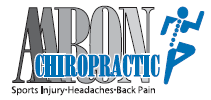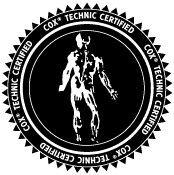Fort Wayne Chiropractic Treatment of Back Pain and Related Fatty Infiltration of Paraspinal Muscles
No doubt, our Fort Wayne chronic back pain sufferers have heard about related paraspinal (multifidus, psoas, quadratus lumborum, erector spinae) muscle fatty infiltrate. They are all tied together: fatty muscle infiltration, disc degeneration, spinal stenosis, facet joint degeneration, back pain. Aaron Chiropractic Clinic addresses all of them, too, to reduce back pain, improve the spine, and enhance your quality of life.
WHAT IS PARASPINAL MUSCLE FATTY INFILTRATE?
Paraspinal muscle fatty infiltrate is an accumulation of fat within the tissue of the muscles located near the spine, the paraspinal muscles. This condition may be triggered by aging or genetics although it can also be prompted by lifestyle factors like poor nutrition or lack of exercise. This condition does not always cause symptoms, but if it does, they can include low back pain and related stiffness in the lower back and legs or troubled walking due to gait disturbances. Intervertebral disc degeneration is a well-known culprit of chronic back pain, disc inflammation, and even spinal stability. Strong, well-functioning paraspinal muscles assist spinal stability. With back pain comes fatty infiltration of the paraspinal muscles that interfere with that. (1) Aaron Chiropractic Clinic tests for these issues carefully during the chiropractic exam with an appreciation for the possible connection.
THE BACK PAIN AND WEAK PARASPINAL MUSCLE CONNECTION
A newer study summarized that disc degeneration and paraspinal muscle weakness were strongly correlated, facet joint degeneration and paraspinal muscle weakness were weakly correlated, and facet joint degeneration and disc degeneration were strongly associated. The authors noted that the amount of paraspinal muscle weakness rose with amount of lumbar disc degeneration and facet joint degeneration while fatty infiltration of the multifidus paraspinal muscle was susceptible to weight. (2) Further, the published literature on the degree to which low back pain and fatty infiltration of multifidus and other paraspinal muscles (erector spinae, psoas, quadratus lumborum) influenced each other was somewhat contradictory – which comes first (pain or fatty infiltrate), can fatty infiltrate be reversed, is one predictive of the other (back pain that there is fatty infiltrate or fatty infiltrate that points to future back pain)? (3) Aaron Chiropractic Clinic keeps on top of what the research reports and encourages our back pain patients to strengthen the muscles that they can so that they can support the spine in healing and preventing more bouts of pain as best as possible.
CHIROPRACTIC CARE OF BACK PAIN AND MUSCLE WEAKNESS
Aaron Chiropractic Clinic realizes that low back pain patients don’t just suffer pain; they also get to deal with muscle quality loss due to more fatty infiltration of the paraspinal muscles. Just how much loss is highly correlated with the severity of the back pain and related dysfunction. (4) That is the reason that exercise is so crucial alongside treatment of back pain for pain relief and prevention. Implementing The Cox Technic System of Spinal Pain Management as well as other chiropractic services, nutrition and exercise, Aaron Chiropractic Clinic is here to help! While researchers are still studying whether fatty infiltration is reversible, Aaron Chiropractic Clinic sees the effort to tone and improve strength a worthy effort.
Listen to this PODCAST with Dr. Kurt Olding on The Back Doctors Podcast with Dr. Michael Johnson as he details the many options available to back pain sufferers when it comes to healthcare providers and highlights the benefit of being under the care of a chiropractor trained in the protocols of The Cox® Technic System of Spinal Pain Management.
CONTACT Aaron Chiropractic Clinic
Schedule your Fort Wayne chiropractic visit to address your back pain and weakened paraspinal muscles. Relief and an enhanced quality of life are in your future!


